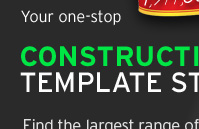








Monthly Cost Reporting ConceptThe basic and most important Construction tool used to determine Project Profitability is the Cost Reporting process. In this article we will explain the concept of cost reporting, understand the use of our template and the associated software packages. Most software packages today are unable to provide a true cost vs value comparison and thus the need to have a customised Excel template to make the necessary adjustments is extremely important. Most major Contractors today apply this approach. When we look at our template the most important part of the cost report is the “Cost versus Allowable Report”. The report is designed around the interface between the CCS allowable grouped into Group Codes (Value) vs. the various cost code allocations used in the site costing system (Costs). The template also contains macro keys for updating the monthly movements. The document is divided into two main sections, namely, VALUE and COST, which enables the Quantity Surveyor to show the measured value to date (allowables) broken down into the respective cost codes for labour and materials, for comparison with the actual costs to date. There are also columns that reflect the monthly variances in allowable on the ‘Cost vs Value Reconciliation’ sheet. This document also shows the total tender allowable for the Contract and the current budget forecast of gains and losses on the 'Forecast Allowable sheet'. Let's now look at the process. Values The values should be computer generated and based on a resourced rate linked analysis according to quantities entered and reported into the predefined set of Cost Codes / Group Codes. In this instance I will refer to the international acclaimed construction software CCS. During tender CCS is used to establish the Contract Price by resource loading rates with labour, material, plant, subcontractors and prelims. In order to obtain the progress values, the CCS Bill of Quantities must be updated with the Quantity Surveyor’s internal valuation of ‘Actual’ work/quantities executed up to the reporting period (not certificate). Once updated CCS will generate a resource analysis report according to the predefined Cost Code parameters. These values are entered directly into the centre column of the “CCVR sheet” named ‘CCS Value’. In order to protect the formulas and integrity of the document only the grey areas are active for input. It should be noted that only net values are used and mark-up is not included. Escalation incurred on the contract (i.e. wage increases, material price increases etc.) must be monitored and entered into the escalation row. Adjustments and transfers are entered in the ‘Under/Over Claim’ column to arrive at an accumulative “Adjusted Value”. This column represents the ‘true value’ of all works executed up to date for comparison against the ‘true cost’ incurred for the same cumulative period. Costs With respect to cost I will refer to Buildsmart which is also an internationally recognised Accounting ERP system. The ‘Buildsmart Costs’ are produced by the Accounts Department based on Material Receipts (Goods Received Note) received from site captured in accordance with the agreed cost codes, as well as time and attendance for salaries, wages and other costs incurred by the project. These costs must be carefully analysed by the site management team to ensure that incorrect costs have not been apportioned to the Contract. The Quantity Surveyor checks the allocated costs from the site copies of the MR’s. These costs are entered into the large grey area left of ‘CCVR Sheet’. Adjustments to the costs include ‘missing costs’ comprising MR’s not costed, inter contract contra charges in, hired equipment, etc. ‘Overstated Cost’ comprises costs incorrectly costed including inter contract charges, etc. ‘Internal Adjustment’ are internal transfers for costs incorrectly allocated to cost codes. The total of this column must always equal zero. Once all of the above costs are entered the ‘Adjusted Costs’ column will represent the ‘true cost’. Comparison of the ‘true value’ and ‘true cost’ gives the profit or loss on allowables for each cost code under the ‘Variance’ Column for that particular month. These variances to the allowable should be carefully analysed by the site team to determine cause and to implement remedial action where necessary. Allowable / Cost to Completion Forecast Once the above monthly reconciliation is done the Quantity Surveyor and Project Manager must determine the impact of these variances both in value and cost on the overall Contract on the ‘Allowables sheet’ (Forecast: Allowable vs Cost). The tender allowable can be adjusted by moving values incorrectly priced to the correct cost heading under the ‘Internal Adjustment’ column as well as adding the approved variations under the ‘Variations’ column. With respect to Costs an adjustment can be made to the ‘Cost to Completion’ under the ‘Adjustment’ column. Both these adjustments will result in an ‘Estimated Final Variance’ for the Contract which represents the Profit / Loss on allowable. Finally, in the “Contract Financial Summary” sheet, all values and costs are summarised and tendered percentage mark-up added to arrive at the gross value and actual profit or loss to date. The value of the Client’s certificate is also compared with the gross value to show contract over or under claim. Matching Concept Costs must always match the revenue that is being claimed. If an item has been claimed but not yet billed with matching costs, the Quantity Surveyor / Project Manager must make certain that its cost is accrued under the ‘Missing Cost’ column. If there is an over claim on the certificate, i.e. the client is billed for work not yet carried out it will be necessary to reduce the value on the contract report by entering the over claim amount under the ‘Under / Over Claim’ column. In such cases the Quantity Surveyor / Project Manager will not accrue costs as the work has not been done. An over claim can be caused, for example, by simply over claiming quantities on the certificate or by being paid in advance by the client for P&G. The Quantity Surveyor / Project Manager must consider the matching concept. This will prevent the over declaring of profits. Important Cost Report adjustments Missing Costs The site ledger up to and including August must be compared with the Head Office cost sheet to August and all costs in the ledger not yet reflected as costed must be listed. This list will identify Missing Costs that must be entered as such on the Cost Report. The Total Costs for August (example) will be; August report: Ledger Costs from accounts Spread / Overstated Costs Sometimes it may be necessary to reduce overstated costs. These are caused by:
Cost provisions may need to be created for maintenance, site clearing or JV share payments to be made at some future date. These provisions should be part of the Quantity Surveyor / Project Manager’s checklist and included as costs on the contract report. Variations The most critical part of the Cost report is the ability to identify and adjust for the changes on site and its financial impact on the overall tendered Profit/Loss. In order to accurately forecast the estimated final cost and revenue an adjustment in both is required. These adjustments are done on the “Allowable Sheet” under the ‘Variation’ column for value and the ‘Adjustment’ column for cost. In order to update the variation column the Quantity Surveyor needs to update the final quantities column in CCS for extras and changes in design or measurement. This will allow the resources in CCS to be updated according to the Final Quantities without affecting the Claimed or Actual values. By generating the resource analysis for Final quantities the Quantity Surveyor can now update the ‘Estimated Final Allowable’ by entering the nett difference from the tender allowable into the ‘Variation' column. This will adjust the final account revenue along with the calculated mark-up and prevent the over / under declaring of profits. Documents required to Complete a Cost Report Value Monthly Application (Actual quantity, Claimed Quantity and Paid Quantity) Costs Buildsmart Cost Sheets Cost Report Template Excel Cost Report template The above template is available for purchase as part of the Commercial Cost Control Package. This process must be carried out every month around the 15th-20th in order to include into the management account. |
||||
|
||||
|
|
|||
|
||||
| Other Articles | ||||
|
||||
|---|---|---|---|---|
|
||||
|
||||
|
||||
|
||||
|
||||
|
||||
|
||||
|
||||
|
||||
|
||||
|
||||
|
||||
|
||||
|
||||
|
|
|
||

 |
|---|